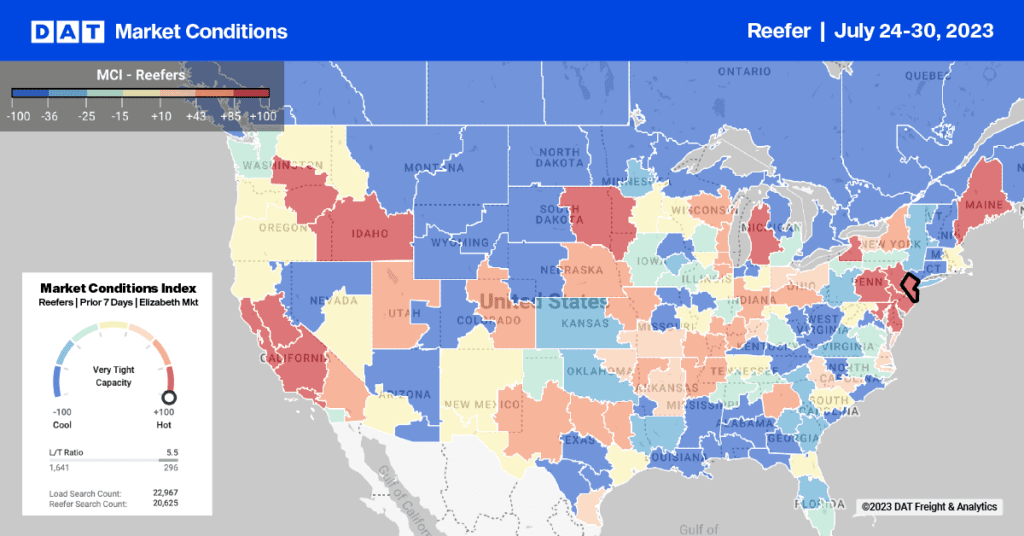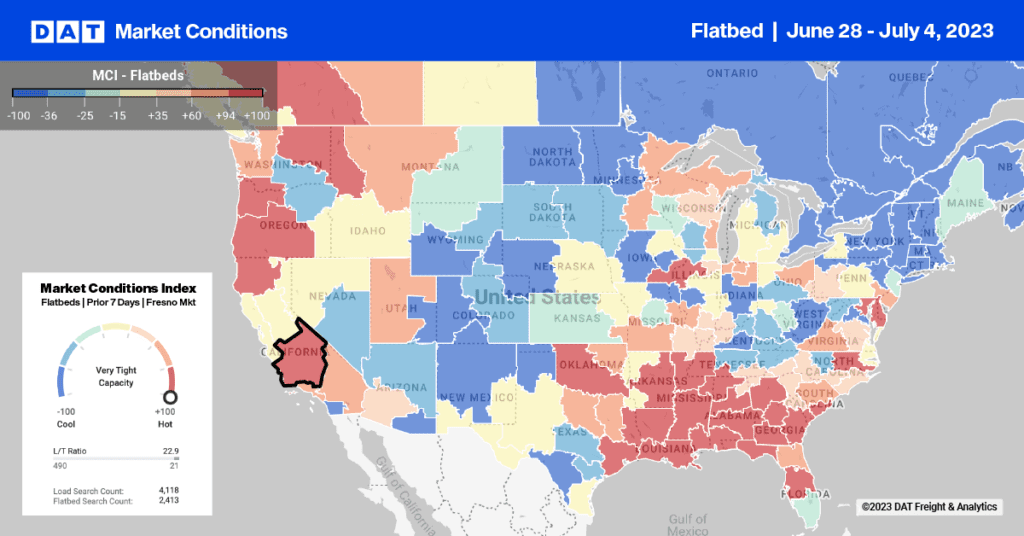Truck freight tonnage has increased slowly but steadily since late 2009. Tonnage appears to be recovering to pre-recessionary levels, according to the not-seasonally adjusted For-Hire Truck Tonnage Index published by the American Trucking Associations. That index estimates the actual freight tonnage moved on commercial trucks, without considering seasonal norms.
By comparison, TransCore’s load volume was 9.6% higher in April than in the corresponding month of 2010. Last year, April loads exceeded the previous record for same-month load availability in the 15-year history recorded by the company’s Freight Index. Comparing the load volume (blue) with the tonnage index (orange) over time in the graph below, you can see the two trend lines (dotted) begin to converge in mid-2009. Loads continue to increase faster than tonnage throughout 2010 and into the beginning of 2011.

When TransCore’s Spot Market Load Index (orange) is compared to the American Trucking Associations’ For-Hire Truck Tonnage Index(blue), it is clear from the trend lines (dotted) that spot market load volume is growing faster than overall truck freight. That means that a larger portion of freight is shifting to the spot market. The gap began to close in late 2009.
What does this mean for your business? In a recent meeting with a group of TransCore customers, several large transportation companies remarked that they were focusing more on the spot market as an avenue for growth and flexibility. Rather than enter into long-term contracts with shippers, a group of asset-based carriers and brokers found that they were able to improve revenues and margins with an increased emphasis on a “day trading” business model. So far, results have been good. All companies in the recent meeting reported a pattern of growth in 2011 to-date.



